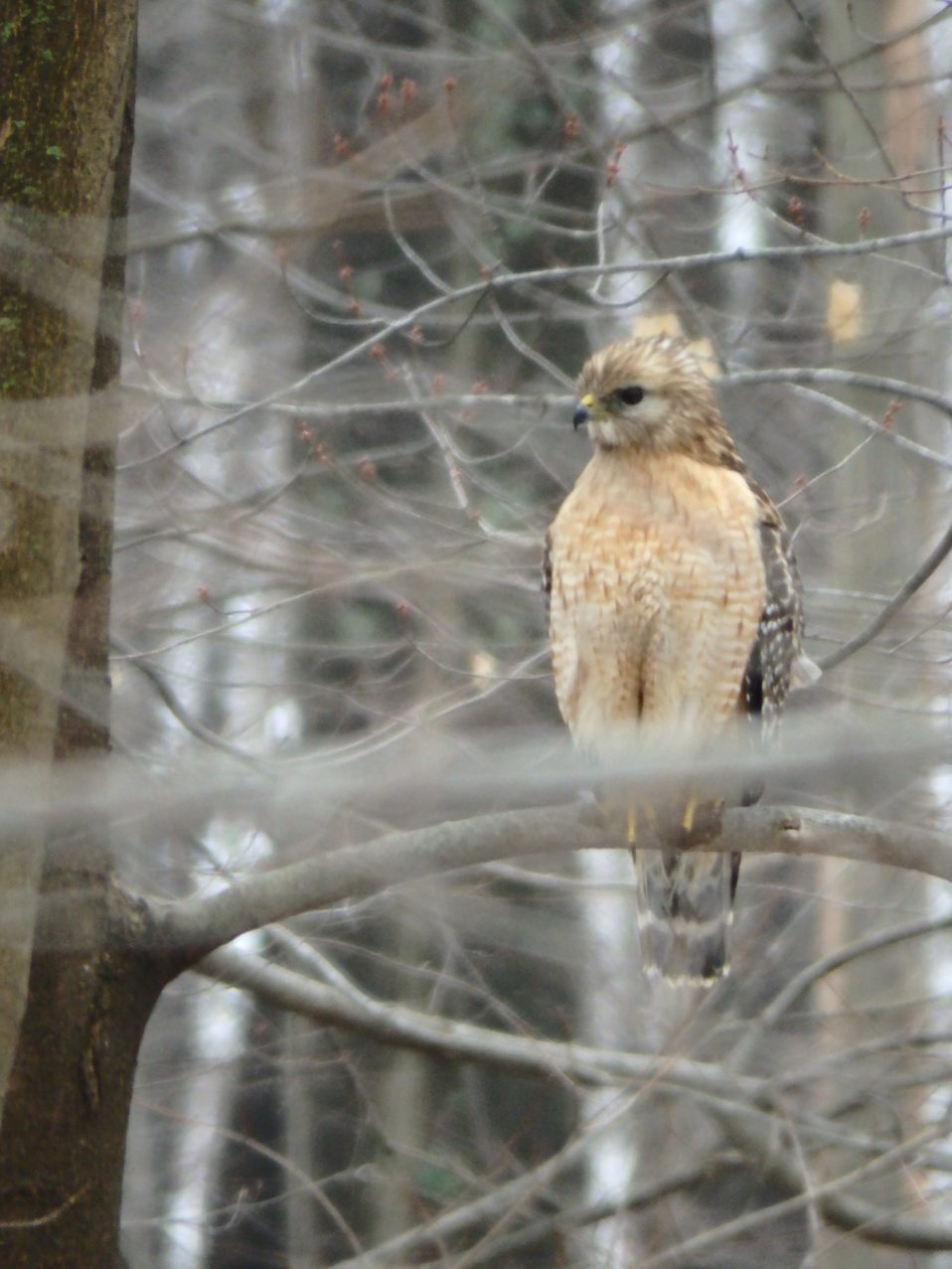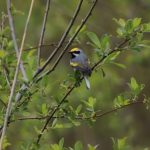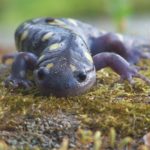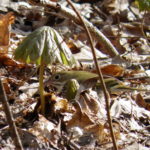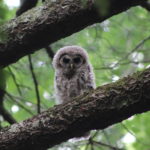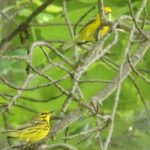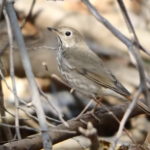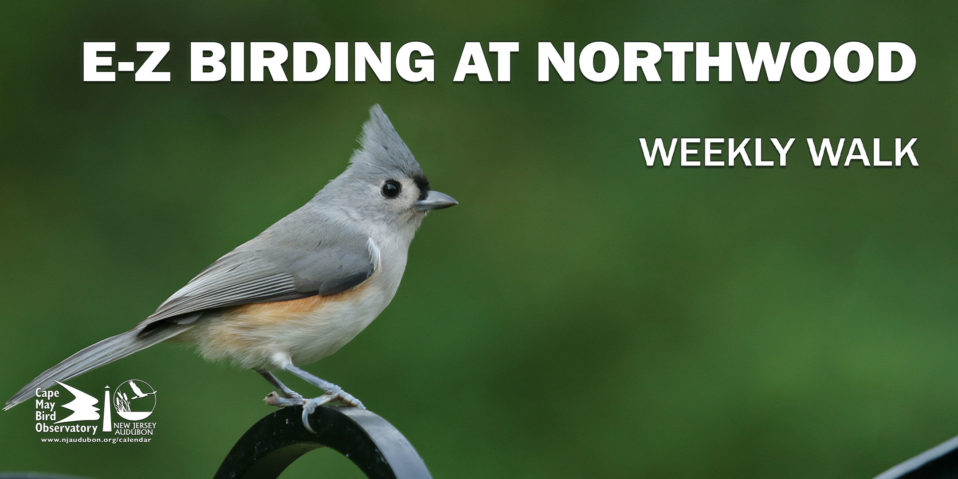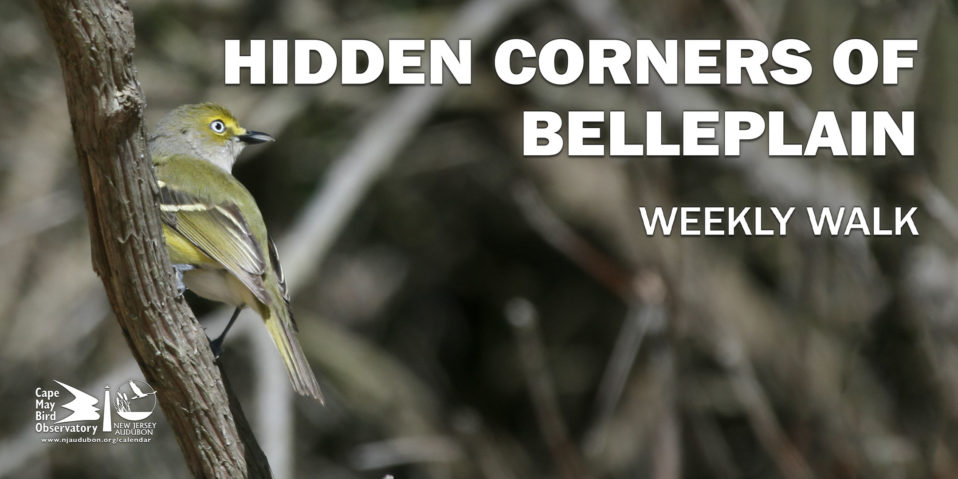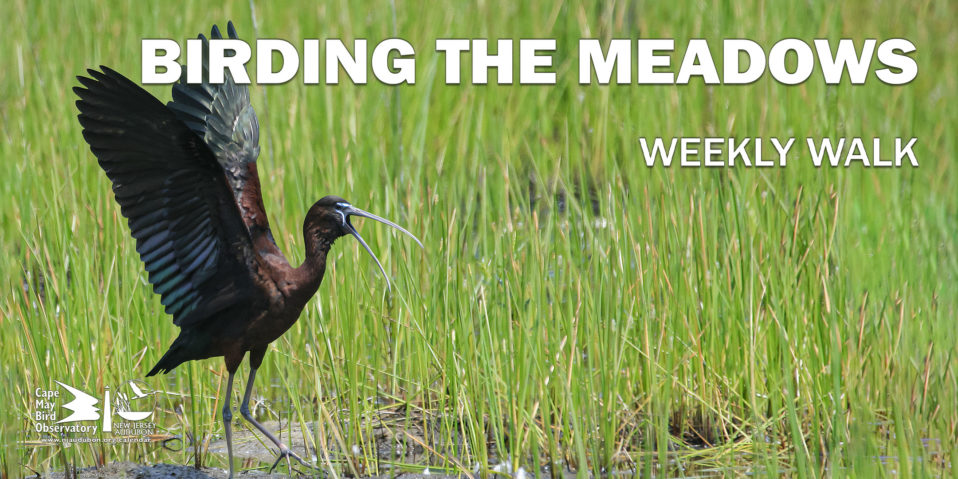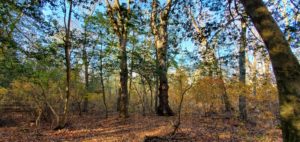
2021 photo of forest at Bear Swamp with large Black Gum trees. Photo by Kristen Meistrell
In southwestern NJ, along the Delaware Bay, Davis (1993) described two areas of possible old-growth broadleaf swamp forests. According to Davis, Bear Swamp West is 100 acres of possible old growth forest containing some 400 to 500-year-old black gum, 300-year-old sweetgum, large red maples, and large sweetbay magnolia trees (of unknown age). Bear Swamp East, located within Belle Plain State Forest, is 115 acres of possible old growth forest that has similar vegetation, with the addition of large tulip trees scattered throughout the swamp. Bear Swamp was designated by the NJ Department of Environmental Protection as one of the state’s most significant natural areas and occupies lowlands close to tidal marshes that provide critical stopover habitat for migrating songbirds (Bear Swamp Natural Area 2014).
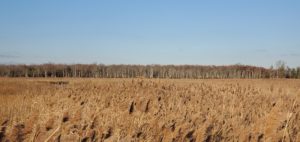
“Ghost Forest” -2021 photo of dead trees (background) at Bear Swamp along the salt marsh interface. Photo by Kristen Meistrell
Like Bear Swamp, forests across the Delaware Bayshore are being threatened by climate change and rising sea levels. As tides rise, salt water penetrates further inland and trees that are not adapted to handle increased salinity slowly die. The combination of rising seas and sinking lands (3mm a year loss) in southern NJ is causing marshes to gradually overtake uplands and freshwater swamps. While the described pockets of potential old growth exist, the broader Bear Swamp was by no means a pristine forest. Bear Swamp was hollowed out decades ago by sand mining, which created large pits that filled with ground water and water from Oranoaken Creek. The pits and creek were once separated by a thin band of swampy woods, but over time rising tides infiltrated the creek killing off trees, allowing saltwater to infiltrate the man-made pits further accelerating saltwater intrusion into Bear Swamp. Salinity readings in the pits increased more than 2X over a 5-year period from 3.5 to 8.2 parts per thousand (Kummer 2018, Smith 2018). In 2018,
Brian Johnson, NJ Preserve Manager for Natural Lands (the organization that owns the property that Bear Swamp is located), was quoted in a 2018 article about Bear Swamp “…as he stood at the edge of the patch of dying trees where Oranoaken Creek spills into the big mining pit near the black gums, ‘Everything is dying where the stream comes in. All of it is dying, 100 percent. And every year is more dramatic than the year before. If you ever have an unbeliever in climate change, bring him here’.” (Kummer, 2018)
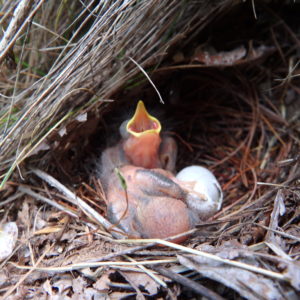
A ground nesting species, the Worm-eating Warbler (designated a Species of Special Concern in NJ) was documented in the 1980’s as a breeding bird at Bear Swamp (Walsh, et al 1999). However with a change in the vegetation types due to climate related issues, including salt-water intrusion and more flooding at Bear Swamp , many breeding birds of Bear Swamp will also be impacted. Photo by John Parke
There is uncertainty in how much climate change will accelerate sea level rise, but the effects in the form of dead woods (also known as “ghost forests”) are already apparent along the Delaware Bay. Currently, active management focuses on enhancing flood control structures around Bear Swamp to slow the saltwater encroachment and monitoring changes to the pits and older forest to help identify actions that might mitigate the effects of rising sea levels (Smith 2018, Tomlinson 2019). However, this may not be enough, as climate models show changes to not just sea level rise, but also to the type of vegetation species, and thus wildlife species, that will occupy these areas over time because of changes to temperature, precipitation, and more frequent weather disturbance events.
These observations return us to our fundamental questions. Within this context, what is old growth? Can we responsibility let nature take its course or do we have fundamental management obligations to encourage diversity as a means to mitigate climate change impacts to support numerous species and ecosystem services in a future that will be different from the past?
By Liz Matseur, John Parke, Don Donnelly and Alex Ireland, Ph.D
References
Bear Swamp Natural Area. 2014. Important Bird & Birding Area Site Guide, New Jersey Audubon. https://web.archive.org/web/20150610213805/http:/www.njaudubon.org/SectionIBBA/IBBASiteGuide/tabid/1258/sk/3022/Version/1b/Default.aspx
Davis, M. D., 1993. Old Growth in the East: A Survey. Cenozoic Society, University of Wisconsin-Madison.
Kummer, F. 2018, December 12. How sea-level rise threatens 500-year-old black gums in a primeval New Jersey forest. The Philadelphia Inquirer. https://www.inquirer.com/science/climate/a/climate-change-sea-level-rise-nj-natural-lands-glades-wildlife-refuge-sourgum-trees-20181211.html
Smith, J. 2018, December. The Tide and Bear Swamp. http://www.smithjam.com/the-tide-and-bear-swamp/
Tomlinson, P. 2019, January 17. Bear Swamp in Downe Township stands test of time; offers ancient trees, birds of prey. New Jersey Advance Media. https://www.nj.com/cumberland/2014/02/bear_swamp.html
Walsh, J., V. Ella, R. Kane & T. Halliwell, 1999, Birds of New Jersey, Bernardsville, NJ, New Jersey Audubon Society




